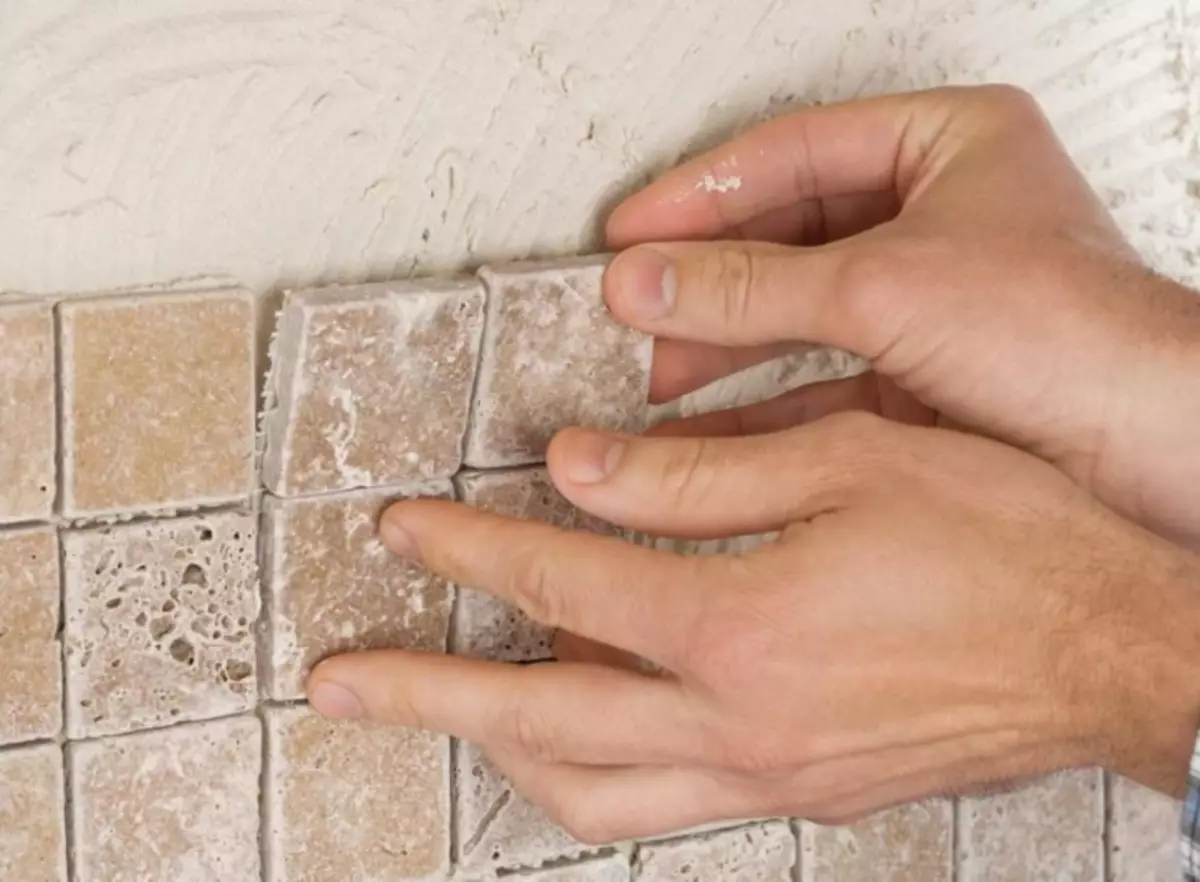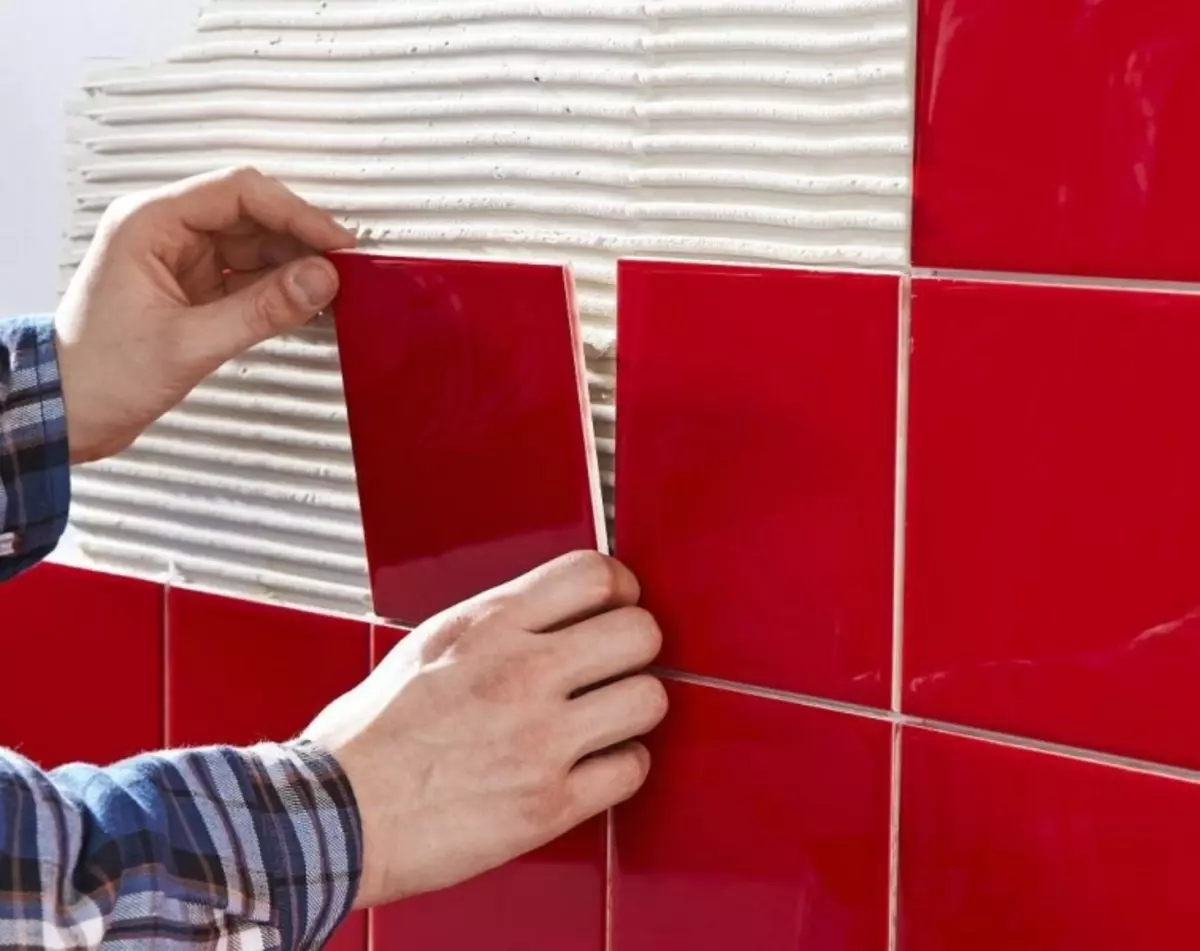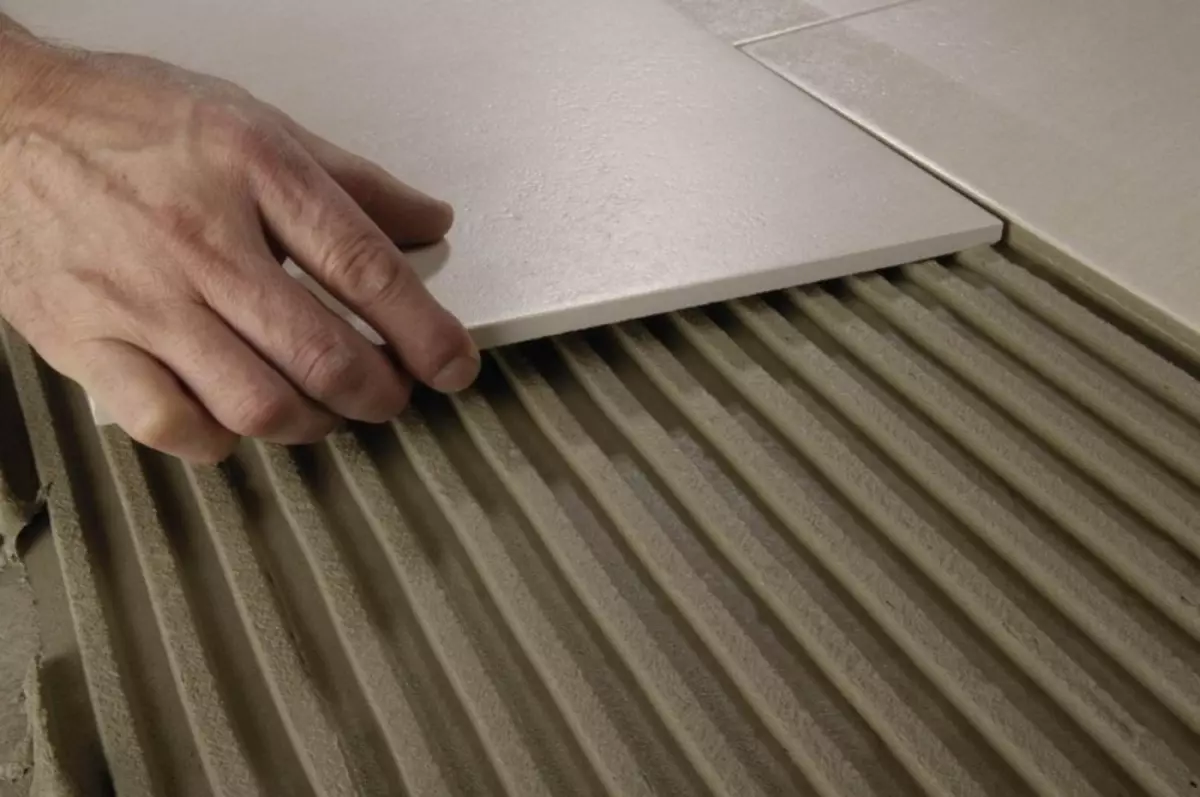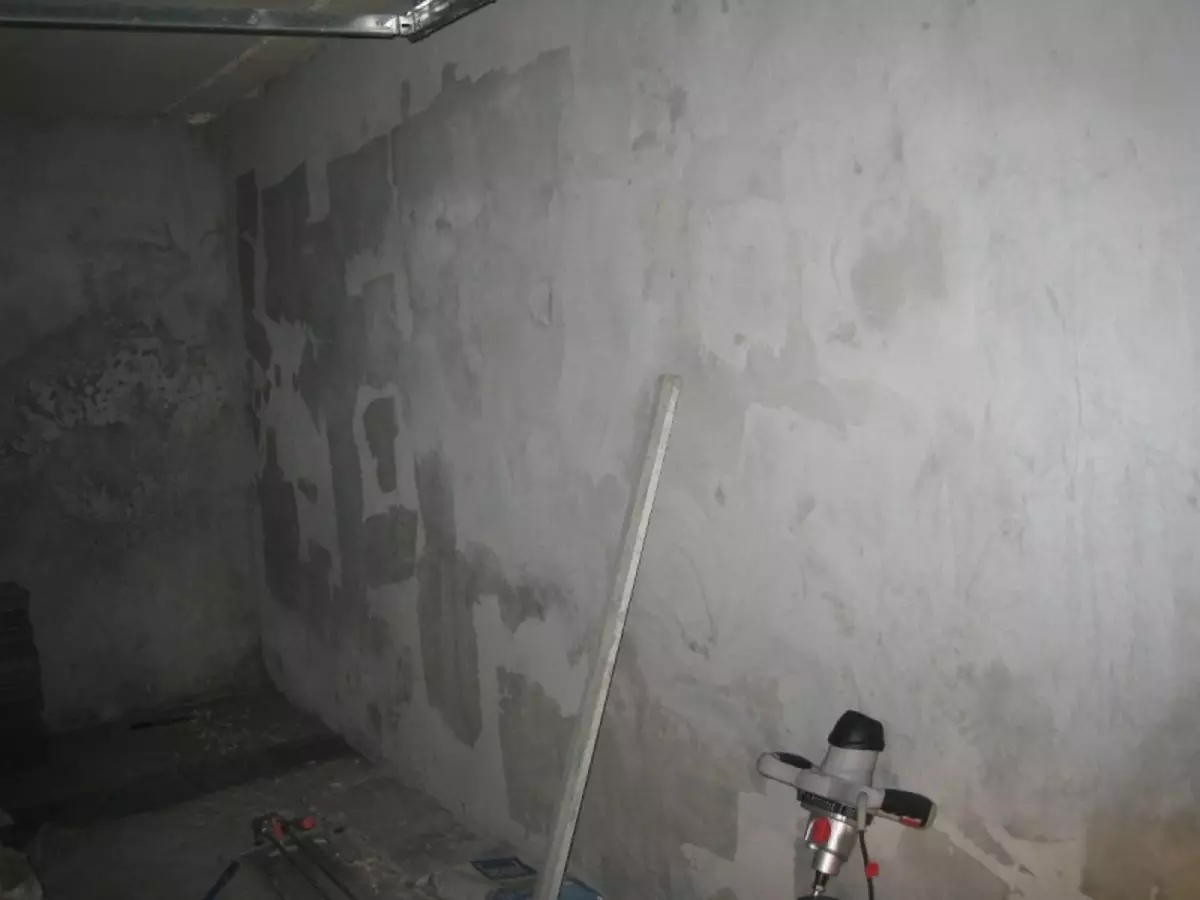
Before laying a tile on plaster plaster, the advantages and disadvantages of this tile method are not only attractive by the aesthetic parameters of the material, as well as quite strong and easy to maintain, but when laying on a plaster surface, certain problems may occur. That this does not happen, you can use the advice of specialists and not allow possible errors. Ceramic tile can, how to combine, and used independently, and if you give preference to original models, you can get an interesting finish and beautiful renovation.
Is it worth it and is it possible to glue the tile on plaster plaster: features of the coating
The gypsum is used in construction for a long time, this coating has established itself from the best side, as the mass is quite pleasant in their work, does not have the composition of rough impurities, it is distinguished by the presence of a pleasant color and dries quickly.

For sticking tiles do not need to apply too thick layer of plaster plaster
In addition to a large number of advantages, this material has several disadvantages that can affect the laying of tiles on top of it:
- When plating with plaster as plaster, it is capable of forming a porous structure, which can adversely affect the tile laid on top.
- Gypsum due to its structure also quickly absorbs the moisture appeared, as a result of which the coating is softened, and fungus and mold is formed.
- This coating is also not durable, especially when applying any blows, dents remain and the chips occur.
- When contacting metal objects, the gypsum is able to destroy them, binding corrosion.
Article on the topic: Proper blowing of vinyl wallpaper on a flieslinic basis
The most suitable gypsum base will be for painting or salary by wallpaper, but with tiles you need to be more careful and attentive. Additional primer on top of the plaster base has more advantages than against - the strong porosity of the surface is reduced, as a result of which its strengthen occurs, a dense water repellent film is created, not allowing fungi and mold. It also increases the strength of the coating, and its grip with a further decorative material.
Rules of preparation and can we put a tile on the Rotband
In order to be laid on the Rotband tile kept firmly and looked attractive, you need to properly carry out preparatory work. The first step is to remove all decorative coatings made on top of the gypsum - old wallpaper or paint. Next, if necessary, align the surface of the walls using plaster based on plaster, after complete drying with a chisel or a small hatcher, make small notches, trying to prevent strong damage.

To properly lay a tile on the Rotband, you should watch the learning video and explore the advice of specialists
Then choose which tile will be styled, because the further preparation of walls depends on it.
It is also necessary to carry out the correct marking itself, this will allow you to calculate the required amount of material, and also think over the processing of the most hard-to-reach places. The most suitable styling material is the glazed ceramics tile, thick up to 6 mm, it is pretty light and has an attractive appearance. Rotband After complete drying, it is necessary to primitive approximately 3 layers of the primer mixture, it is necessary for deeper penetration and clutch of materials among themselves. Primers need to be applied using a roller or brush, then wait for the complete drying of each layer to 8 hours. After its complete drying, it can be placed directly to the ceramic tile directly to the lime putty.
Nuances:
- So that the tiles tightly kept on the plaster surface, it is better to glue it with glue with the presence of moisture-resistant properties. It will not only strengthen the surface, but also give it a greater resistance to the aggressive effects of the wet environment.
- The making rules for such mixes are indicated on the package, properly made glue will be firmly to keep the tile and not deliver trouble during operation.
- If there is a heavy tile laying on a spacious wall, then the base should be prepared more carefully. In addition to the priming, as in the previous version, it is necessary to drill holes up to 5 mm in diameter in diameter, preferably in a checker order, then small dowels are inserted into them, then the steel galvanized mesh or fiberglass is attached to them. Then the top of the cement-sandy solution is placed on top, it is necessary for heavy tiles to keep it better and disappear under its weight.
Article on the topic: Building cornice for curtains: Calculation of length, tips
As decorative techniques, a combination of textured gypsum plaster and tiles can be used, it will look original in the living rooms and the bathroom. Smooth transitions and the original finish of certain zones will create interesting combinations and add raisins, emphasizing the idea of the designer. If we put the tile on the plaster plaster, adhering to all the rules and tips, then you can get a high result in the end, and the work done will be high quality for many years.
How to apply tiled glue instead of ordinary plaster
Often there are situations where the consumption of materials for repair work was incorrect, and the tile glue remains. Many buyers are then wondering - and if you use the remnants of the adhesive mixture instead of plaster?

Apply tile glue you need to pre-purified and aligned surface
Experts argue that this can be done with the remaining existed, but you need to know some of the features of such a job:
- The wall with this coating looks greatly coarse, so you will need to additionally use the finish putty.
- A plus of such a coating is that the glue goes well and is able to hold firmly.
- It is necessary to use a medium and corner to work for work, they are more convenient and can come in handy not only for such work.
- Tiled glue can not only firmly put the tile, but also to grind the plaster wall.
To facilitate the burden on the foundation, puzzle blocks or PGP are used - they are environmentally friendly, have accessible cost and easy to work. To process them, you do not need to use many materials, just one layer of putty.
Rules of plaster tiled glue together with plaster
So that the tile is well held on the plaster base, it is necessary to apply high-quality materials to strengthen the surface, then the expected result will be as a result. If the surface, covered with plaster, is not reliable, it is better not to risk, otherwise all work will be spoiled - the tile on a weak and porous base will disappear.
Article on the topic: How to independently install the inlet wooden door

To keep the tile for a long time, you should use high-quality materials from manufacturers that apply modern technologies in their manufacture
Experienced builders began to apply the remaining tile glue and gypsum plaster together, such an experiment has certain advantages:
- This primer has durability and steady erasure;
- It is easy to work with him, and she goes well;
- This is a more economical option than several layers of plaster and strengthening mixtures.
But there are also some disadvantages - it's hard on your own, without experts to calculate the proportions, how much you need to use, so you can make a mistake and spend money.
Specialist's answer: Is it possible to lay a tile on plaster plaster (video)
In conclusion, it should be noted that glue cannot be used, but there are certain nuances that need to be observed in order not to be disappointed in the work done.
